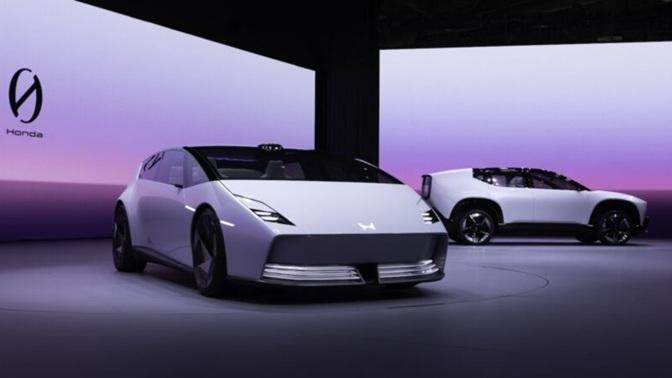In a surprising move that’s sending ripples through the automotive world, Honda has announced it will pull back on its ambitious electric vehicle (EV) plans. The Japanese automaker now expects EVs to make up only 20% of its global sales by 2030, down from its original goal of 30%. While some may see this as a retreat, Honda is instead pivoting toward what’s working right now: hybrids.

The shift comes amid a global slowdown in EV demand. While electric cars have seen rapid growth over the past few years, the momentum has started to cool in key markets. Factors like high EV prices, limited charging infrastructure, and economic uncertainty are making customers think twice.
Honda’s CEO, Toshihiro Mibe, didn’t sugarcoat the situation. “Based on the current market slowdown, we expect EV sales in 2030 to fall below the 30% that we previously targeted,” he said during a recent press briefing. Instead, Honda is adjusting its sights and taking a more cautious approach.
Originally, Honda planned to pour $69 billion (10 trillion yen) into developing next-generation EVs and smart car software by the end of the decade. That figure has now been trimmed to $48.4 billion (7 trillion yen)—a significant 30% reduction. This doesn’t mean Honda is backing out of the EV race entirely. But it does signal a shift in priorities—fewer resources will go into battery-electric models, while hybrids will now take center stage.
Earlier this year, Honda turned heads at CES by revealing two futuristic EV concepts: the 0 Saloon and 0 SUV. These models were designed from scratch and featured cutting-edge technology, including the ability for Level 3 autonomous driving (hands-off, eyes-off in certain conditions). Both vehicles were meant to signal a bold new era for Honda, and they’re still on track to be built at the company’s new EV hub in Ohio, starting in 2026. However, plans to expand the lineup with more battery-powered cars—including an affordable electric crossover—are now uncertain.
As part of its revised strategy, Honda is also pausing a $10.7 billion transformation of its factory in Ontario, Canada, which was supposed to become another major EV production center. That plan is now delayed by at least two years. The factory was to include battery cell manufacturing and other key facilities needed to scale EV production, but those efforts are now being reevaluated.
While Honda is slowing down on EVs, it’s accelerating its hybrid efforts. The company now plans to launch 13 new hybrid models globally by 2031. That’s a big shift—and it reflects Honda’s confidence in hybrid tech as a bridge between traditional gas engines and full EVs. Even more interesting, larger vehicles like SUVs and trucks will soon be getting hybrid powertrains, which could appeal to customers who want better fuel efficiency without giving up range or performance. By 2030, Honda expects to sell between 2.2 and 2.3 million hybrid vehicles per year, helping it stay competitive as it fine-tunes its long-term EV plans.
Despite these changes, Honda insists that its long-term goal hasn’t changed: By 2040, the automaker still aims to have 100% of its new car sales come from battery-electric and hydrogen fuel-cell vehicles. This suggests that while Honda is adjusting its near-term approach, it’s not giving up on electrification. It’s simply choosing a more balanced, flexible path—one that recognizes today’s market realities.
Honda’s EV journey hasn’t been the smoothest. Although it was one of the pioneers of early electric cars back in the 1990s, its lineup of battery-powered vehicles has remained small over the years.
Currently, Honda only offers two EVs in the U.S.: the Honda Prologue and the Acura ZDX, both developed in partnership with General Motors. That’s why the move toward an in-house EV platform—as seen in the 0 Series—is such a big milestone. But scaling up EV production is expensive and uncertain, especially when buyers aren’t yet sold on the technology. That’s why this new hybrid-first strategy could be a smarter play for Honda right now.
In a world where many automakers are blindly charging into the EV future, Honda’s decision to pivot isn’t cowardly—it’s calculated. By slowing down on EVs and focusing on what customers want today (hybrids), Honda is buying time to develop smarter, more competitive electric cars for tomorrow.
Yes, it’s disappointing to see EV investments scaled back. But it’s also refreshing to see a company adjust based on real-world data instead of hype. The 0 Saloon and 0 SUV are still on the way. Hybrid sales are about to boom. And Honda’s ultimate electric vision for 2040 is still very much alive. Let’s just hope they keep their eye on the road—and don’t hit the brakes too hard.
Source- WSJ
Related Post
